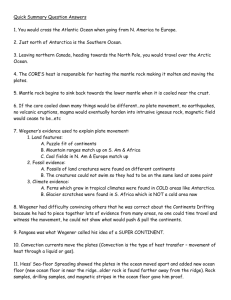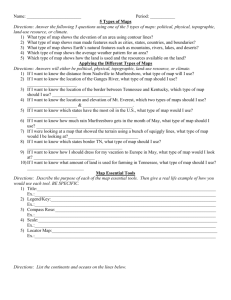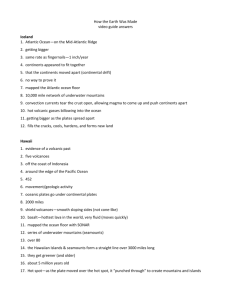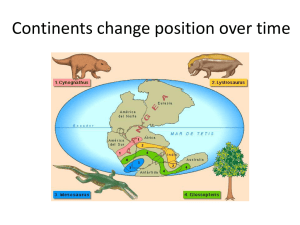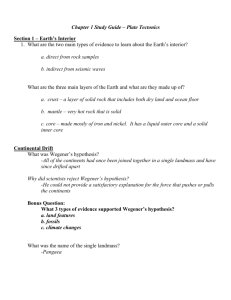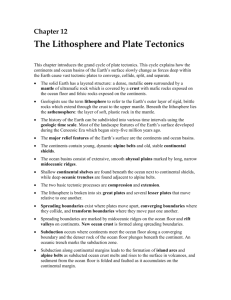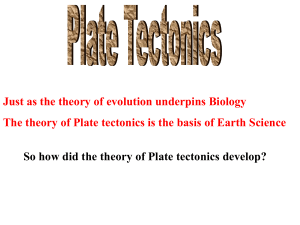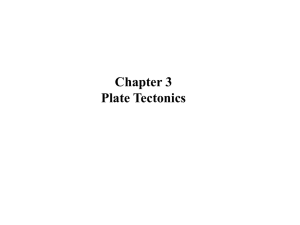Ocean Floor Mapping - Holicong9thGradeScience
advertisement
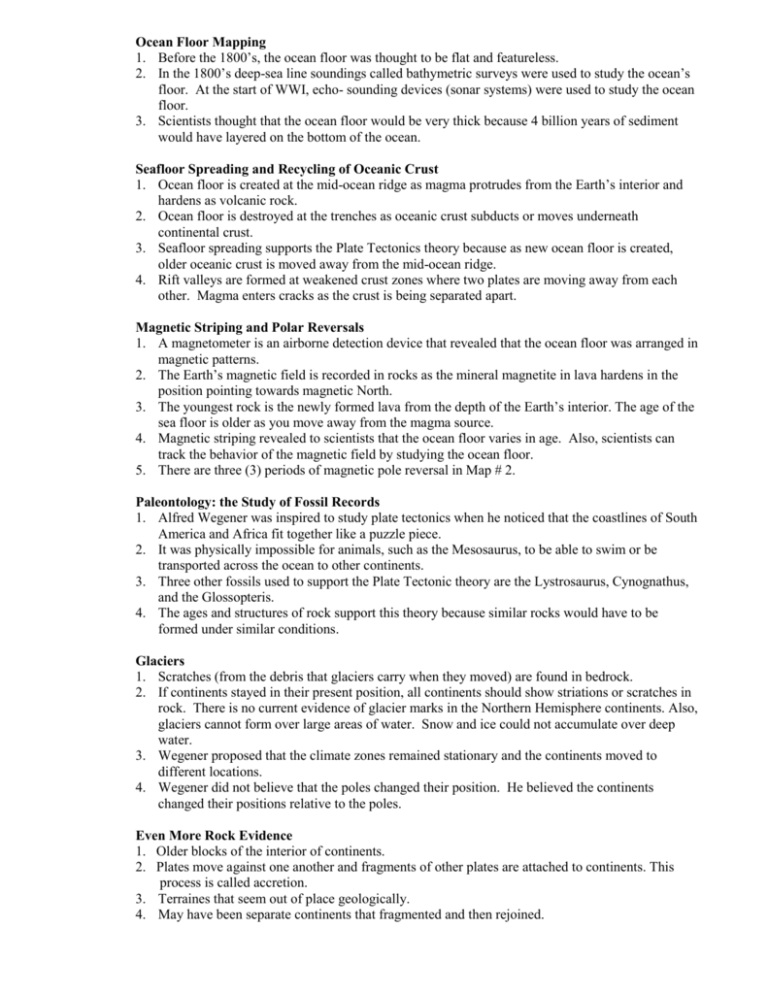
Ocean Floor Mapping 1. Before the 1800’s, the ocean floor was thought to be flat and featureless. 2. In the 1800’s deep-sea line soundings called bathymetric surveys were used to study the ocean’s floor. At the start of WWI, echo- sounding devices (sonar systems) were used to study the ocean floor. 3. Scientists thought that the ocean floor would be very thick because 4 billion years of sediment would have layered on the bottom of the ocean. Seafloor Spreading and Recycling of Oceanic Crust 1. Ocean floor is created at the mid-ocean ridge as magma protrudes from the Earth’s interior and hardens as volcanic rock. 2. Ocean floor is destroyed at the trenches as oceanic crust subducts or moves underneath continental crust. 3. Seafloor spreading supports the Plate Tectonics theory because as new ocean floor is created, older oceanic crust is moved away from the mid-ocean ridge. 4. Rift valleys are formed at weakened crust zones where two plates are moving away from each other. Magma enters cracks as the crust is being separated apart. Magnetic Striping and Polar Reversals 1. A magnetometer is an airborne detection device that revealed that the ocean floor was arranged in magnetic patterns. 2. The Earth’s magnetic field is recorded in rocks as the mineral magnetite in lava hardens in the position pointing towards magnetic North. 3. The youngest rock is the newly formed lava from the depth of the Earth’s interior. The age of the sea floor is older as you move away from the magma source. 4. Magnetic striping revealed to scientists that the ocean floor varies in age. Also, scientists can track the behavior of the magnetic field by studying the ocean floor. 5. There are three (3) periods of magnetic pole reversal in Map # 2. Paleontology: the Study of Fossil Records 1. Alfred Wegener was inspired to study plate tectonics when he noticed that the coastlines of South America and Africa fit together like a puzzle piece. 2. It was physically impossible for animals, such as the Mesosaurus, to be able to swim or be transported across the ocean to other continents. 3. Three other fossils used to support the Plate Tectonic theory are the Lystrosaurus, Cynognathus, and the Glossopteris. 4. The ages and structures of rock support this theory because similar rocks would have to be formed under similar conditions. Glaciers 1. Scratches (from the debris that glaciers carry when they moved) are found in bedrock. 2. If continents stayed in their present position, all continents should show striations or scratches in rock. There is no current evidence of glacier marks in the Northern Hemisphere continents. Also, glaciers cannot form over large areas of water. Snow and ice could not accumulate over deep water. 3. Wegener proposed that the climate zones remained stationary and the continents moved to different locations. 4. Wegener did not believe that the poles changed their position. He believed the continents changed their positions relative to the poles. Even More Rock Evidence 1. Older blocks of the interior of continents. 2. Plates move against one another and fragments of other plates are attached to continents. This process is called accretion. 3. Terraines that seem out of place geologically. 4. May have been separate continents that fragmented and then rejoined.
